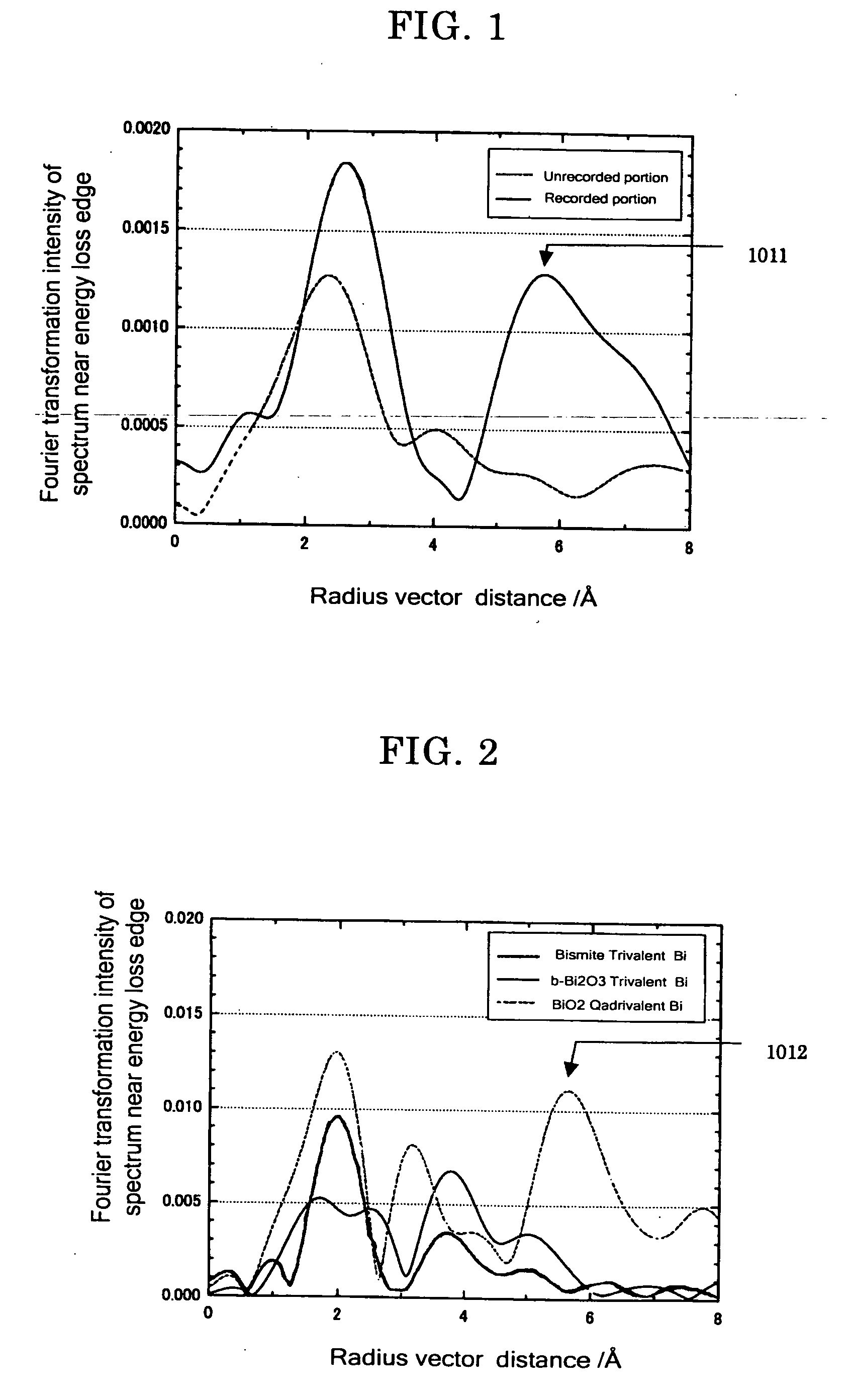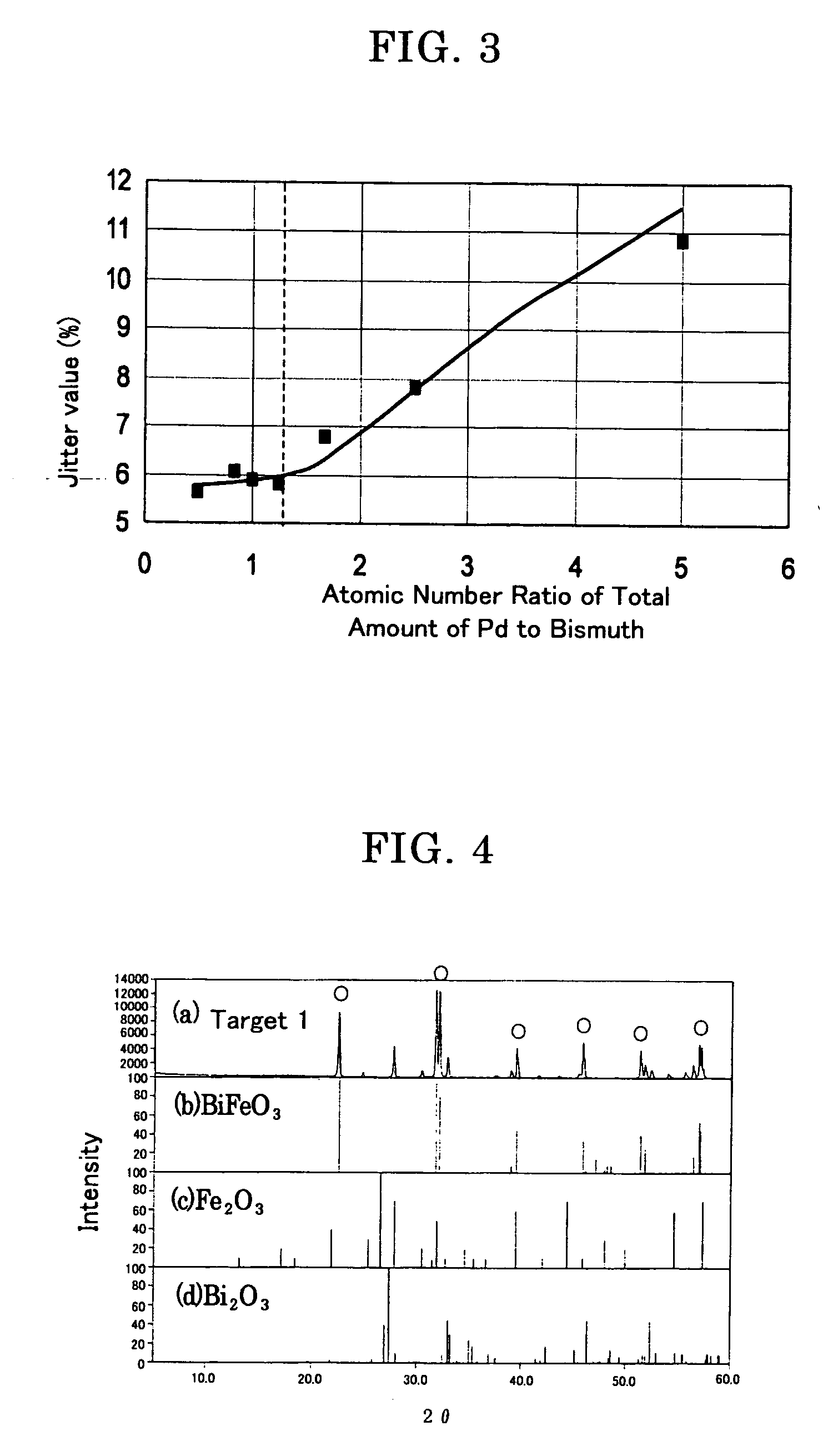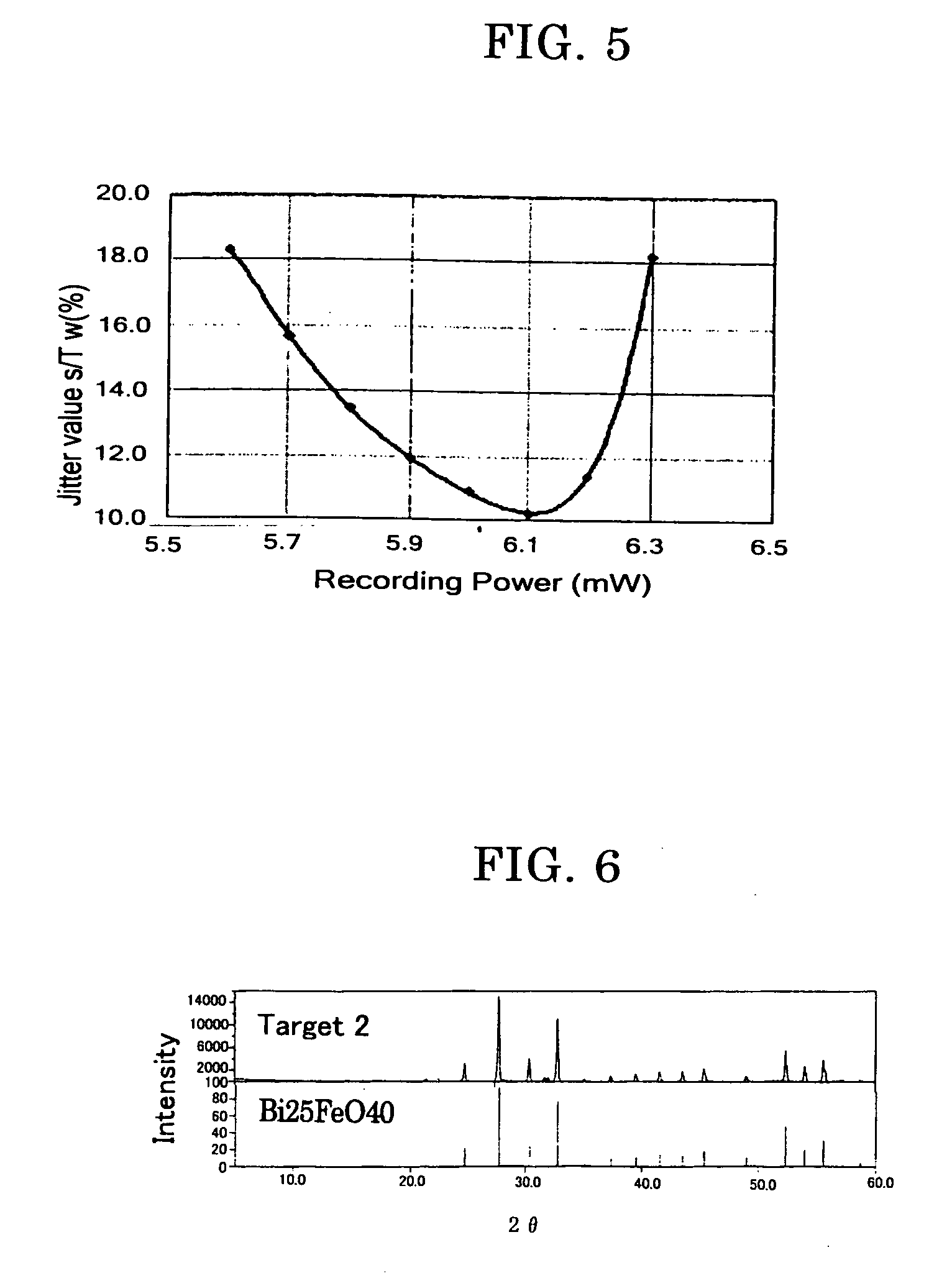Write-onece-read-many optical recording medium, sputtering target and the production method thereof
a technology of optical recording medium and worm, which is applied in the field of writeoncereadmany (worm) optical recording medium, can solve the problems of not having a sufficiently high refractive index, failing to yield a higher degree of modulation amplitude, and organic material having optical properties equivalent to those of conventional materials that have not yet been found, etc., to achieve excellent recording-reproducing properties and high density recording
- Summary
- Abstract
- Description
- Claims
- Application Information
AI Technical Summary
Benefits of technology
Problems solved by technology
Method used
Image
Examples
example a-1
[0192] On a polycarbonate-substrate with a guide groove having a groove depth of 21 nm formed thereon, a layer having the composition represented by BiOx (02O3 and a diameter of 76.2 mm.
[0193] Recording was performed to the optical recording medium under the following conditions using an optical disk evaluation system DDU-1000 manufactured by PULSTEC INDUSTRIAL CO., LTD. having a lens numerical aperture of 0.65 at a wavelength of 405 nm.
[0194] Modulation Mode: 1-7 modulation
[0195] Recording linear density: The shortest mark length (2T)=0.231 μm
[0196] Recording linear velocity: 6.0 m / s
[0197] Waveform equalization: Normal equalizer
[0198] As a result, an excellent jitter value of 9.9% was obtained in a consecutively recorded portion at a recording power of 5.2 mW, and excellent binary recording properties having a modulated amplitude of 55% were realized.
example a-2
[0199] A write-once-read-many recording medium of the present invention was produced by sputtering a layer which comprises Fe and O, having a thickness of 10 nm on a polycarbonate-substrate with a guide groove having a groove depth of 21 nm formed thereon. This layer was formed at a radiofrequency power of 100 W and an Ar gas flow rate of 40 sccm using a sputtering target having the composition of Bi10Fe5Ox and a diameter of 76.2 mm. The target was prepared by calcining a mixture of Bi2O3 and Fe2O3 at a ratio of 2:1. Theoretically it should have been Bi10Fe5O22.5, however the amount of oxygen was unable to be measured with accuracy because of leaked oxygen in a calcination process, and therefore the oxygen is represented by Ox.
[0200] The optical recording medium was evaluated under the following conditions using an optical disk evaluation system DDU-1000 manufactured by PULSTEC INDUSTRIAL CO., LTD. having a lens numerical aperture of 0.65 at a wavelength of 405 nm.
[0201] Modulatio...
example a-3
[0206] Reflection EELS measurements were performed using a write-once-read-many optical recording medium produced and used for recording in Example A-1. A scanning Auger electron spectrometer PHI4300 manufactured by Perkin-Elmer was modified for the measurements. EELS stands for Electron Energy Loss Spectroscopy and is a spectroscopy system in which electrons are irradiated to a sample to measure an energy distribution of electrons scattered by interaction with the outer surface of the sample. When a primary electron of certain energy excites the inner shell of an atom to be measured, an electron of certain energy is discharged, resulting in the scattering of the primary electron. During this process, some energy is lost by the interaction with the neighboring atoms. Therefore, by examining the way the electrons are scattered, information such as radial distribution function of neighboring atoms can be obtained.
[0207] The radial distribution function in the vicinity of an oxygen at...
PUM
| Property | Measurement | Unit |
|---|---|---|
| Fraction | aaaaa | aaaaa |
| Fraction | aaaaa | aaaaa |
| Wavelength | aaaaa | aaaaa |
Abstract
Description
Claims
Application Information
 Login to View More
Login to View More - R&D
- Intellectual Property
- Life Sciences
- Materials
- Tech Scout
- Unparalleled Data Quality
- Higher Quality Content
- 60% Fewer Hallucinations
Browse by: Latest US Patents, China's latest patents, Technical Efficacy Thesaurus, Application Domain, Technology Topic, Popular Technical Reports.
© 2025 PatSnap. All rights reserved.Legal|Privacy policy|Modern Slavery Act Transparency Statement|Sitemap|About US| Contact US: help@patsnap.com



